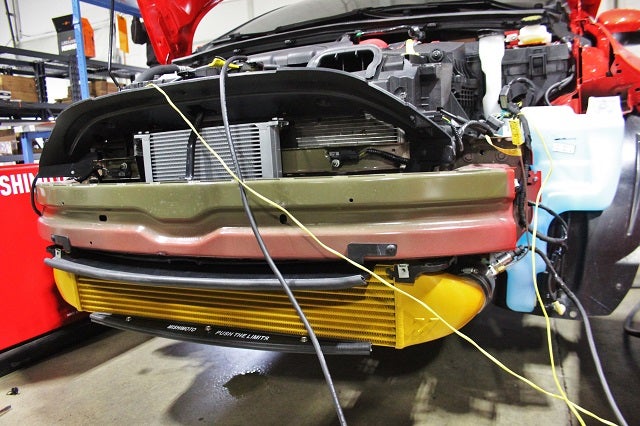
Beat The Heat! Mishimoto Fiesta ST Intercooler R&D, Part 4: Initial Prototype Testing
The most exciting part of product R&D is always the testing phase. This typically includes setting up some neat sensors, running the car on the dyno or on the street, and crunching our data. We are anxious to see how our first prototype coolers perform on the Fiesta. Let's jump right into the plans for this first round of testing.
Testing Plans
As mentioned in the previous segment, we will test four different coolers.
- Stock intercooler
- Mishimoto bar-and-plate prototype 1 (larger internal bar height)
- Mishimoto bar-and-plate prototype 2 (smaller internal bar height)
- Mishimoto tube-and-fin prototype
For each cooler we will be collecting data for temperature, pressure, and power output. Each cooler will be tested repeatedly until we have three consistent runs producing data as accurate as possible.
Below is a look at the three different core types that will be tested.
Ford Fiesta ST intercooler prototypes
To collect temperature and pressure data, we installed two sensor bungs in each intercooler boot. This will allow us to evaluate these numbers pre-intercooler and post-intercooler for an accurate comparison.
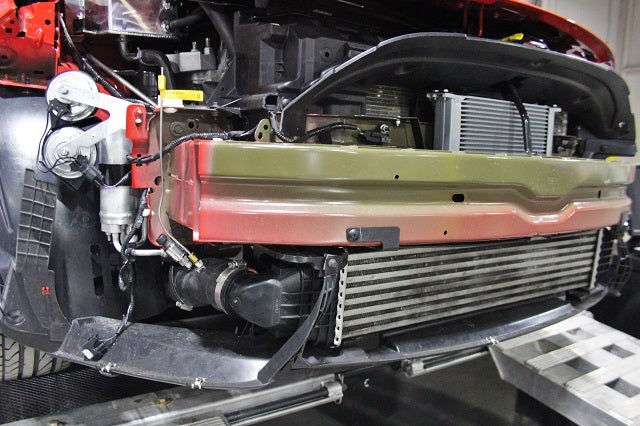
Fiesta ST performance parts testing sensors
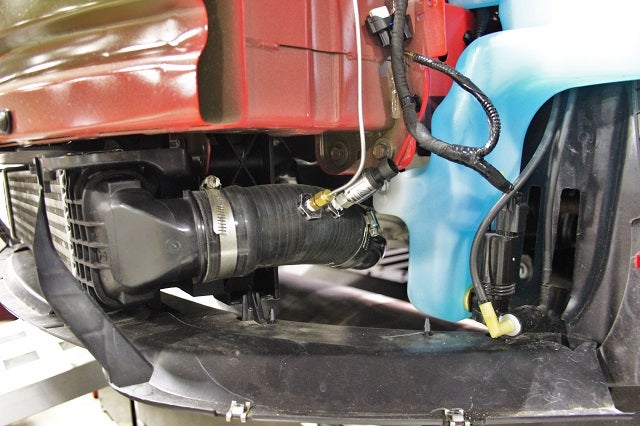
Fiesta ST performance parts testing sensors
Time For Testing
Once we had a plan for the testing process, we set the Fiesta up on our Dynapack™ and prepared our intercoolers.
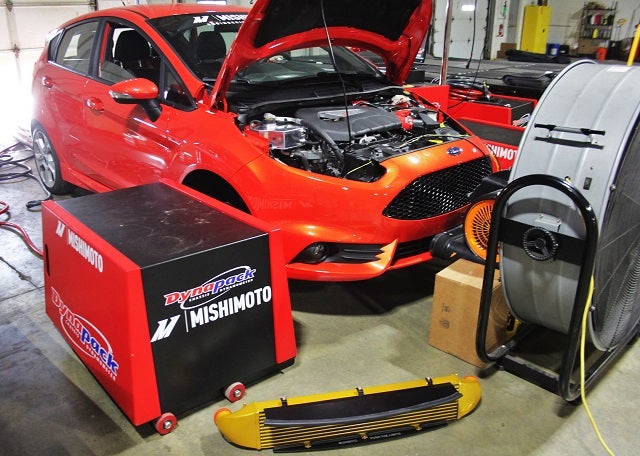
Ford Fiesta ST intercooler dyno testing
Swapping coolers was a relatively quick process for our team, as we have become adept at bumper removal.

Ford Fiesta ST intercooler dyno testing
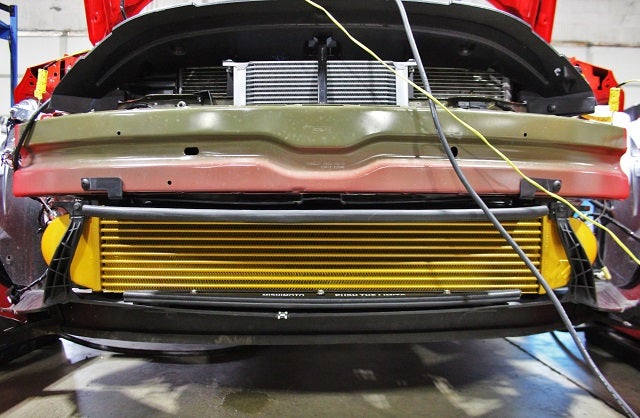
Ford Fiesta ST intercooler dyno testing
Pictures can show only so much. How about a video showing a couple pulls?
Initial Testing Data
Time to review our findings. Now, our first measure of heat exchanger performance is heat transfer. This will be a comparison of intercooler inlet and outlet temperatures for our four tested intercoolers.
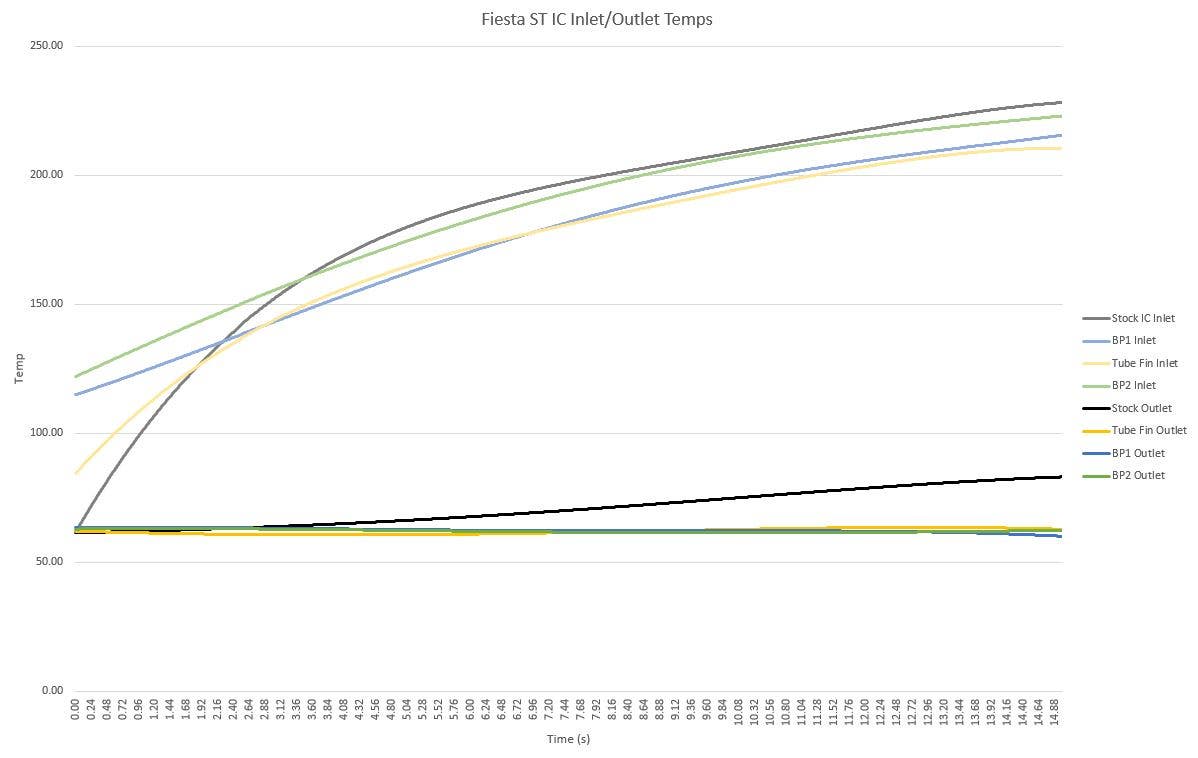
Ford Fiesta ST intercooler temperature data
These data points immediately reveal the inefficiency of the stock intercooler. Inlet temperatures for the stock cooler begin at around 160°F and rise to 225°F. Outlet temperatures at the start of the pull are ambient (62°F) and quickly rise to around 80°F at the end of the run. This is not a massive inefficiency but can certainly be improved.
Now let's take a look at our prototype coolers. Inlet temperatures sit at around 5-10°F below the stock cooler. The big change here is in outlet temperatures. Despite the rising inlet temperatures during the runs, we recorded ambient outlet temperatures for all three prototype cores. Although this would not be considered a torture test of the coolers, the results do show a big improvement over the stock cooler.
As we've noted previously, heat transfer is directly related to internal core flow. Our prototype cores are more restrictive than the stock core, which is how we achieved the temperature drops. We recorded pressure at both the inlets and outlets to compare these values as well.
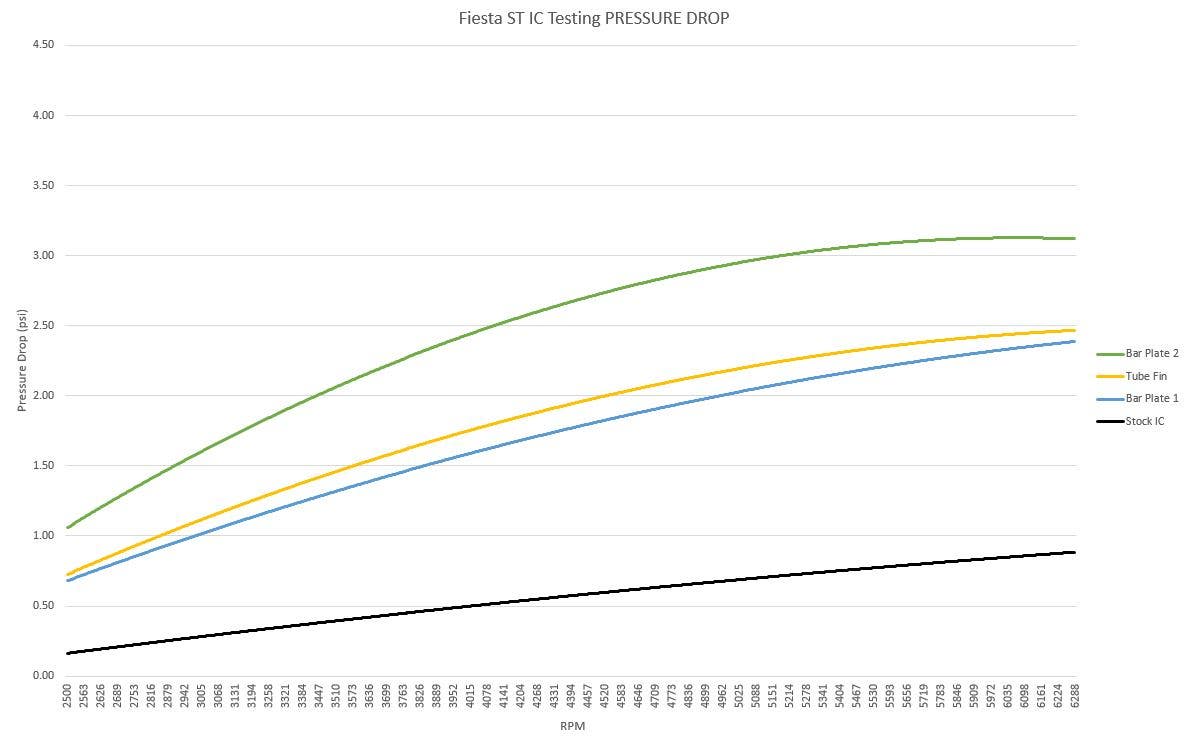
Fiesta ST performance parts testing data
This is the plot that will have the biggest impact on our decision. The stock intercooler is rather unrestrictive and free flowing. From one side of the cooler to the other, a maximum drop of 0.9 psi was recorded. Again, this explains why the heat transfer is not efficient.
Our very dense bar-and-plate prototype 2 was a serious outlier in this test. Pressure drop numbers exceeded 3 psi, which is quite high for this tiny turbocharger. This particular core was eliminated.
One bar-and-plate prototype and one tube-and-fin unit remained. These cores feature a similar internal fin density despite being different core types. They produced a similar pressure drop, right around 2.5 psi.
In addition to our pressure and temperature data, we also collected our power output data for each core.
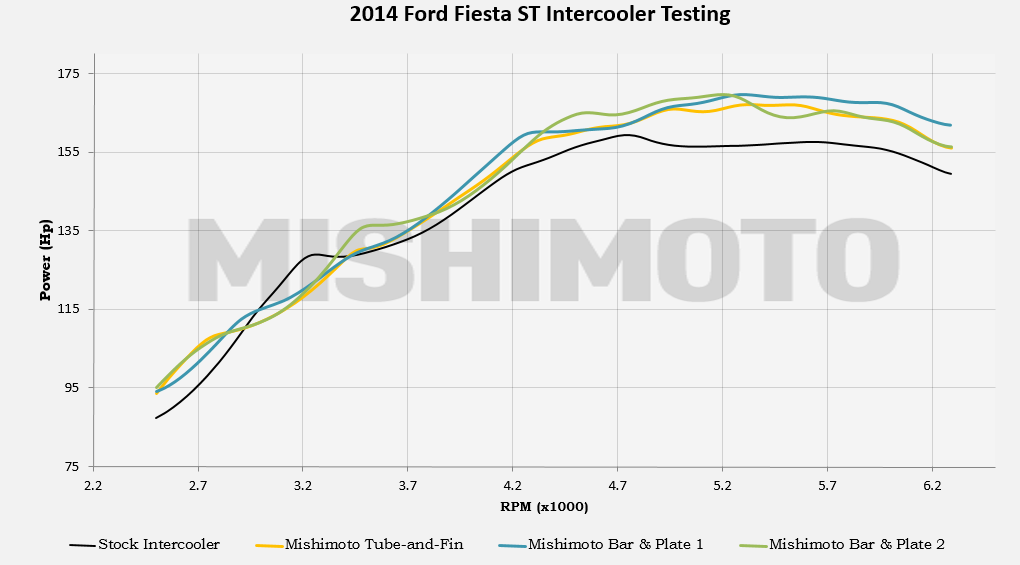
Fiesta ST performance parts testing data
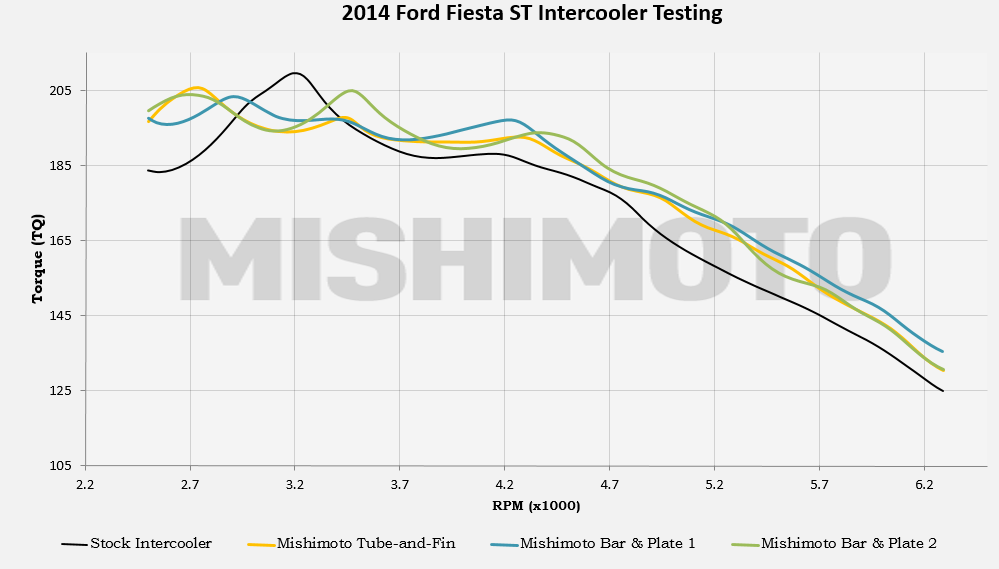
Fiesta ST performance parts testing data
Our plots showed gains in the top end of around 5-10 whp and wtq with each of our prototypes. These gains occurred possibly because of the lower intake temperatures.
Coming Up - New Prototype Testing
We are not exactly satisfied with these results. Temperature and power data are great, but we are not pleased with the pressure drop numbers. We are planning to design two more cores with varying internal fins that we hope will produce a better compromise between temperature and pressure.
Our goal is to bring pressure drop closer to the stock cooler while still maintaining efficient heat transfer.
Keep an eye on our blog for other updates on awesome new Fiesta ST performance parts!
Thanks for reading!
-John




